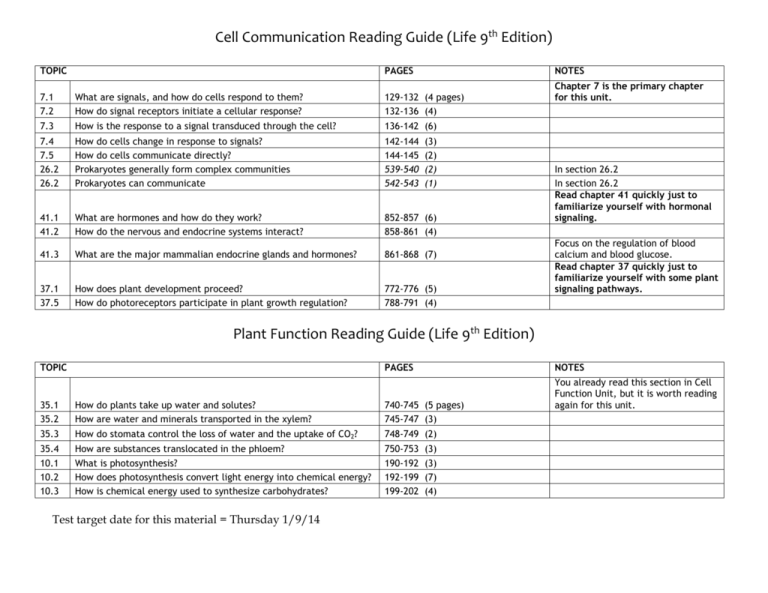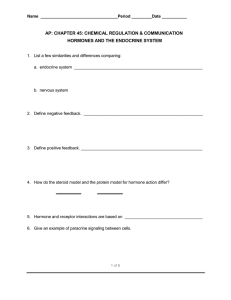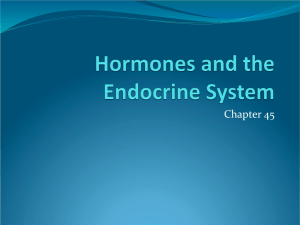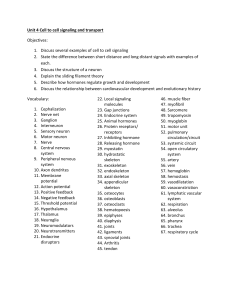Cell Communication Reading Guide (Life 9th Edition) TOPIC
advertisement

Cell Communication Reading Guide (Life 9th Edition) TOPIC PAGES NOTES 7.1 7.2 What are signals, and how do cells respond to them? How do signal receptors initiate a cellular response? 129-132 (4 pages) 132-136 (4) 7.3 How is the response to a signal transduced through the cell? 136-142 (6) 7.4 7.5 26.2 26.2 How do cells change in response to signals? How do cells communicate directly? Prokaryotes generally form complex communities Prokaryotes can communicate 142-144 144-145 539-540 542-543 41.1 41.2 What are hormones and how do they work? How do the nervous and endocrine systems interact? 852-857 (6) 858-861 (4) 41.3 What are the major mammalian endocrine glands and hormones? 861-868 (7) 37.1 37.5 How does plant development proceed? How do photoreceptors participate in plant growth regulation? 772-776 (5) 788-791 (4) (3) (2) (2) (1) Chapter 7 is the primary chapter for this unit. In section 26.2 In section 26.2 Read chapter 41 quickly just to familiarize yourself with hormonal signaling. Focus on the regulation of blood calcium and blood glucose. Read chapter 37 quickly just to familiarize yourself with some plant signaling pathways. Plant Function Reading Guide (Life 9th Edition) TOPIC PAGES NOTES 35.1 35.2 How do plants take up water and solutes? How are water and minerals transported in the xylem? 740-745 (5 pages) 745-747 (3) 35.3 How do stomata control the loss of water and the uptake of CO2? 748-749 (2) 35.4 10.1 10.2 10.3 How are substances translocated in the phloem? What is photosynthesis? How does photosynthesis convert light energy into chemical energy? How is chemical energy used to synthesize carbohydrates? 750-753 190-192 192-199 199-202 Test target date for this material = Thursday 1/9/14 (3) (3) (7) (4) You already read this section in Cell Function Unit, but it is worth reading again for this unit.











